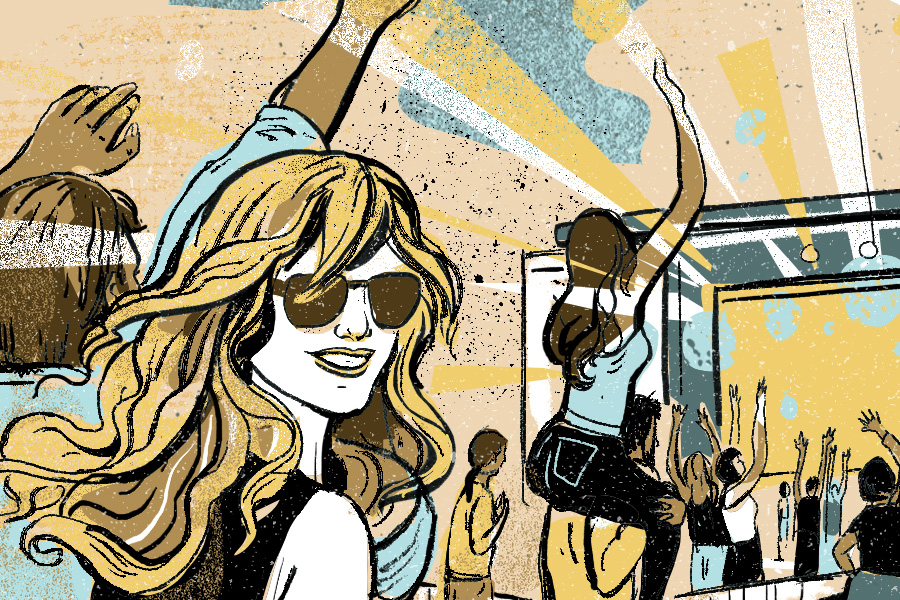
Remember the simple pleasures of the pre-COVID world when being able to see your favorite band was merely a matter of scoring seats from the drummer’s girlfriend or saving up to be gauged by Ticketmaster?
The near-term expectation for the post-pandemic music scene this summer, industry veterans say, is outdoor live concerts at lower capacity to account for social distancing. As for indoor arena events, as Elton John might sing, it’s gonna be a long, long time.
“There’s a lot of national artists that want to get back to work,” says Dan McGowan, the managing partner of The Crofoot Presents, a Pontiac concert venue. “We’ll be doing national outdoor shows in the summer.” That’s not great news, though, for the lesser-known and local talent that had been the usual fare at Crofoot pre-COVID.
And while the outdoor shows will sound like what we’re used to, they will look and function differently. Pods will be standard, hosting between four and six people per group and spaced out from other parties. Food and drink may be brought to you via contactless ordering. “A lot of the things are just going to make it more comfortable for people,” McGowan says.
Much depends on the vaccine rollout, of course. If enough people are vaccinated and new cases of COVID fall dramatically, concertgoers may start to feel better about attending indoor shows. Either way, McGowan says, venues like his probably will be investing in massive air purifiers and touchless fixtures to further protect guests.
One legacy of COVID may be the virtual concert, an existential necessity during the pandemic that showed some performers how to monetize their far-flung popularity. The Detroit band Electric Six, for instance, did three virtual shows in 2020 for which they charged viewers $10 to stream and included a download of the concert with a higher-quality audio mix. Some 1,500 viewers around the world, including diehard fans in the U.K. and Russia, showed up.
Many acts and venues may continue offering some virtual programming, particularly for people with disabilities or those living away from major metropolitan areas who couldn’t easily attend shows in the past. “Streaming concerts are not as revenue-generating as live, but it’s great if you can do them both,” says Nate Dorough, a talent buyer for concert producer Audiotree Presents, which operates in Michigan and Illinois.
Last year, Audiotree Presents hosted 25 shows online and sold about 10,000 tickets at prices from $10 to $20 for indie acts that included Against Me!’s Laura Jane Grace and ’90s rock band Local H. That’s roughly equal to selling out Loving Touch in Ferndale or the Blind Pig in Ann Arbor 25 times. “You can put these livestreams on your 60-inch TV and it looks great,” says Dorough. “You can turn it up and piss off your neighbors. It’s as close as you can get to a full-blown concert experience in your living room.”
Dorough says streaming shows could remain a mainstay in coming years as live shows and touring gradually finds a return to normal. Music websites such as Bandsintown are banking on it, rolling out a $9.99 subscription service that offers 25 live concerts a month from Jeff Tweedy of Wilco, Phoebe Bridgers, and Flying Lotus. It could also be a permanent supplement to live shows, allowing bands to entertain fans in parts of the world that are expensive to visit.
Still, while the model worked as a temporary salve, says Electric Six guitarist Dave Malosh, the band probably won’t do virtual shows once the pandemic subsides. “I want to go play shows,” says Malosh, co-owner of Small’s Bar in Hamtramck. “Part of the [virtual shows] is making sure no one forgets about us. We’ve got it down to a science now, but I didn’t sign up for this, man. I want to rock!”
One scary prospect, though, is that the pandemic’s economic devastation could result in fewer venues still in business by the time everyone’s ready to go out again. That depends on the ability to pack in bigger crowds as soon as possible, McGowan says.
“If we’re at 50 percent capacity a year from now, our industry is in trouble,” he says. “I hope we’re at 80 to 90 percent capacity in a year — and that will still be hard. The margins in our industry are incredibly thin.”
|
|
|









